Canvey Wick: The UK’s implausible tourist attraction
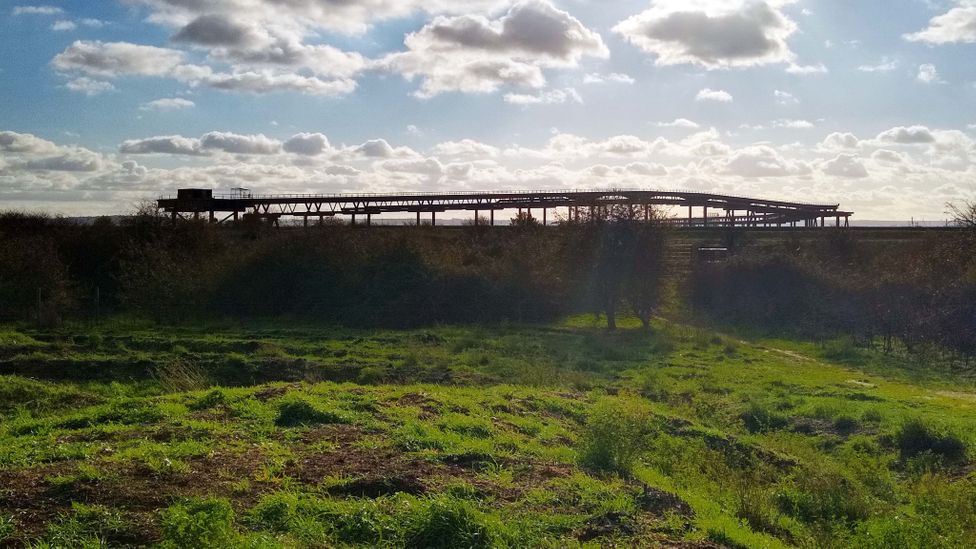
The 6km journey from Benfleet railway station took me across a creek and along a busy main road into the town of Canvey Island, an expanse of low-lying, reclaimed land separated from the rest of Essex by a network of waterways and protected from tidal flooding by a serpentine seawall. The fields soon disappeared from view, replaced by a semi-industrial sprawl dotted with retail parks, warehouses, factories and huge fuel storage tanks.The UK’s implausible tourist attraction
A few vehicles turned off at the local golf course, the rest pulled into a large supermarket. Other than a learner driver practising an emergency stop on a quiet stretch, no one else continued onto Northwick Road, where an empty car park with a blink-and-you-miss-it sign and a metal sculpture of an insect were the only indicators I’d reached a biological hotspot.
Spanning some 93ha of meadows, grassland and scrub on the shores of Holehaven Creek, Canvey Wick has “as many species per square metre… as there are in a rainforest,” according to the Royal Society for the Protection of Birds (RSPB), which manages the site in partnership with conservation charity Buglife on behalf of the Land Trust, which looks after public open spaces for the benefit of local communities.
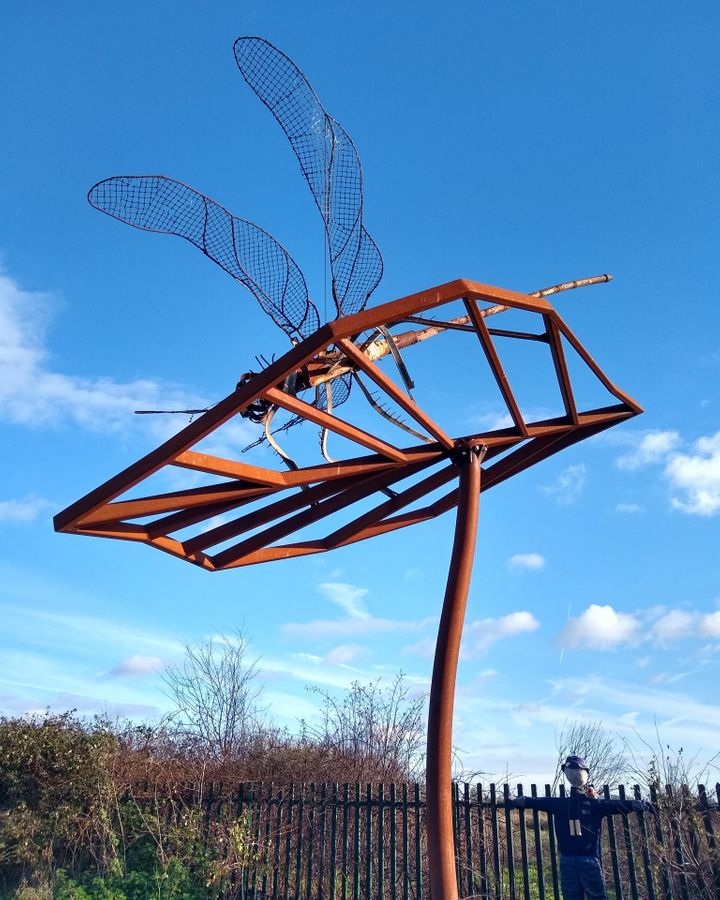
It’s also one of the most significant areas in the UK for invertebrates – a category that includes insects, arachnids and molluscs, among others – with more than 1,500 species, 30 of which are on the UK’s endangered “red list”. They include the evocatively named shrill carder bee, the five-banded weevil wasp and the scarce emerald damselfly.The UK’s implausible tourist attraction
As I followed a trail into the 18.5ha Canvey Wick Nature Reserve, the drone of traffic was slowly replaced by rustling leaves and the sound of birdsong. Apart from the occasional dog walker, there was no one else around, and while many of the wildflowers had largely disappeared for the year along with the insects that depend on them, autumn gave the area a stark, eerie beauty. Although I was just 30 miles from central London, it felt like a wilderness.The UK’s implausible tourist attraction
“Canvey Wick is a hugely important place,” said Jamie Robbins, Buglife’s programmes manager. “It’s more than just invertebrates. We’ve got loads of rare flowering plants like orchids. There are birds like nightingales and whitethroats, and it’s a real hotspot for reptiles such as common lizards, slow worms and adders.”
The origins of Canvey Wick’s abundance of wildlife lie, unexpectedly, in the geopolitical turmoil of the Middle East of the 1970s. Originally a grazing marsh, the site sits on the south-west edge of Canvey Island, which was sparsely populated by sheep farmers, salt harvesters, fishers and shellfish cultivators for some 2,000 years. At the turn of the 20th Century, the island was home to just a few hundred people, but over the following decades the population surged as it became a fashionable seaside resort – until low-cost package holidays in Europe brought the good times to an end – as well as a centre for the petrochemical industry.The UK’s implausible tourist attraction
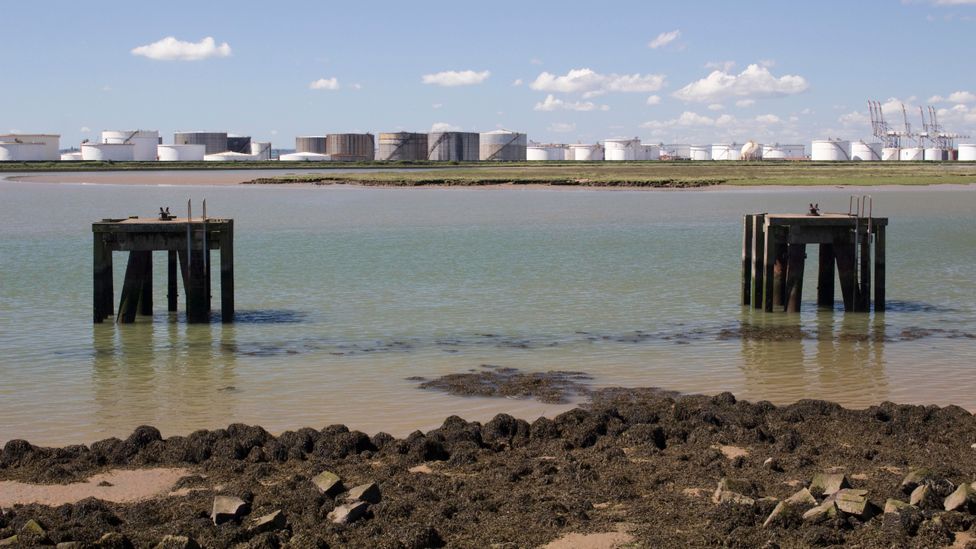
Canvey Wick, though, remained untouched until 1970, when Occidental Petroleum controversially secured permission to build a six-million-tonne oil refinery, storage depot and deep-water jetty on the site. The US firm ploughed £55m into Canvey Wick, covering it with a 2-3m layer of silt, sand, gravel and shell fragments dredged from the River Thames to help prepare for the development.
Yet work ground to a halt just a few years later thanks to the first “energy crisis” – when Middle Eastern countries slashed oil production in response to US support for Israel during the Yom Kippur War, triggering a global economic crisis – which made the project unviable. Canvey Wick was, essentially, abandoned to nature.The UK’s implausible tourist attraction
In the mid-1990s, many of the refinery’s larger structures were eventually demolished, but plans to build housing, a business park and retail developments on the site came to nothing, thanks to campaigns by the local community. This inaction provided the space for a remarkable transformation. The dredged material was partially contaminated and created free-draining conditions, said Robbins, keeping the site largely open and stopping trees and dominant vegetation from establishing. “You end up having this lovely mosaic of bare ground and flowery stuff, which invertebrates love. Canvey Wick has the kind of habitats that have been lost in the wider landscape as Essex has become more agricultural, industrial and full of housing estates. It’s the last refuge for a lot of rare species.”The UK’s implausible tourist attraction
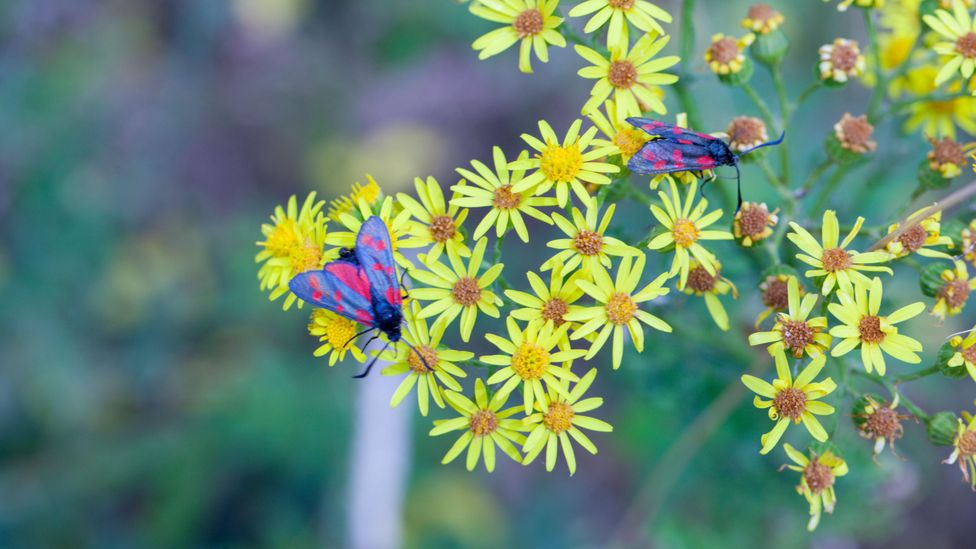
Today Canvey Wick is one of the most significant areas in the UK for invertebrates (Credit: Helen Cowles)
Canvey Wick was named a Site of Special Scientific Interest (SSSI) in 2005, with Dr Chris Gibson, an officer for government advisory body Natural England, memorably describing it as a “brownfield rainforest” (a brownfield site is land that was previously used for industrial purposes). The designation protected the site – which was subsequently taken on by the Land Trust – from future developments. After a period of habitat restoration work, the nature reserve opened to the public in 2014. Since then, engaging the local community has been a vital part of the project. According to Marc Outten, the RSPB’s site manager for Canvey Wick: “It’s about making it accessible. Canvey Wick lends itself to journeys of discovery and exploration.”
Jo Loman, Buglife’s community warden for Canvey Wick, plays a key role in this process, organising a wide range of activities, including school holiday events, conservation programmes for young people and guided walks. She also works with the National Health Service on “social prescribing”, an approach that see doctors refer patients to non-clinical services to support their health and wellbeing.
I’m a big believer in education by stealth – doing fun activities, but people learn stuff while they’re there
“My job is to get the whole [community] to understand that Canvey Wick is there, that it’s a unique place and that they should be really proud to have it on their doorstep,” she said. “I’m a big believer in education by stealth – doing fun activities, but people learn stuff while they’re there.”
Visitors from further afield are also finding their way to Canvey Wick, thanks to the July 2022 launch of a new 85-mile stretch of the England Coast Path, which passes by the site. “People have certain perceptions of what Essex is about, but I think opening up this path will really help to raise awareness of what the county has to offer,” said Lisa Bone, tourism and place marketing manager at Visit Essex. “[Canvey Wick] is a very special place in a very unusual setting. It’s a great asset for an area that needs a tourism boost.”The UK’s implausible tourist attraction
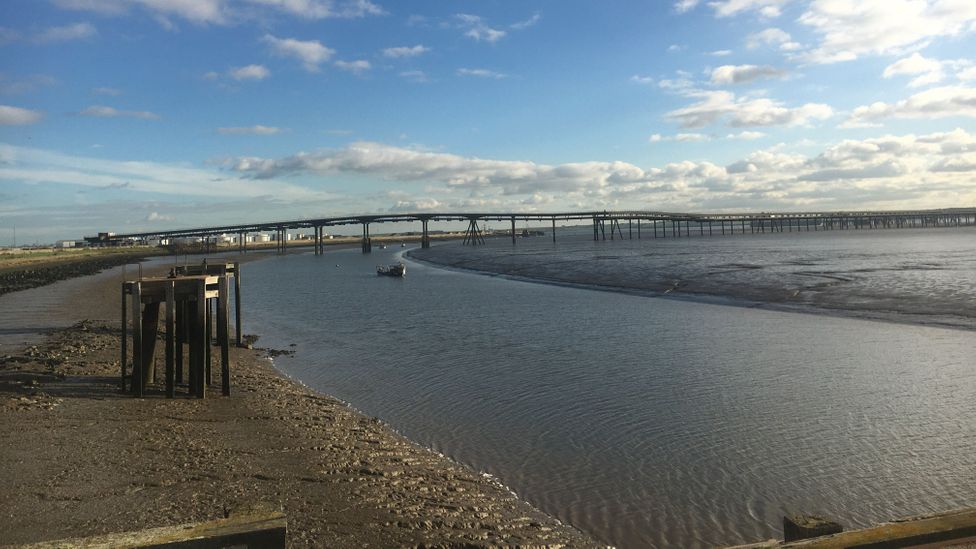
Stumbling across the remnants of the refinery today feels like discovering the ruins of a lost city. I walked along roads that led nowhere, greenery lapping at their edges like an incoming tide. There were rows of decapitated streetlights, and the last of the summer wildflowers burst out of giant concrete cylinders at erratic angles. Meanwhile, the rusting niches of the biggest surviving structure, the deep-water jetty that marches out into the creek, provided nesting spots for birds.
It was a vivid illustration of the dramatic change that can take place in semi-urban, post-industrial sites in a relatively short period of time, as well as the vital role these under-appreciated areas can play in tackling the biodiversity and climate crises. This value isn’t always recognised: Buglife is currently campaigning against a plan to build a theme park on Swanscombe Peninsula, a similar post-industrial urban wilderness on the Kent side of the Thames Estuary.
Brownfield sites like Canvey Wick often get a bad name but they have a huge amount to contribute
“Open, flower-rich grasslands are really important for biodiversity,” said Robbins. “When we think about [storing] carbon, a lot of people’s brains go straight to trees, but well-managed grasslands and wildflower [landscapes] can store, in some scenarios, even more carbon than trees. Brownfield sites like Canvey Wick often get a bad name but they have a huge amount to contribute.”The UK’s implausible tourist attraction
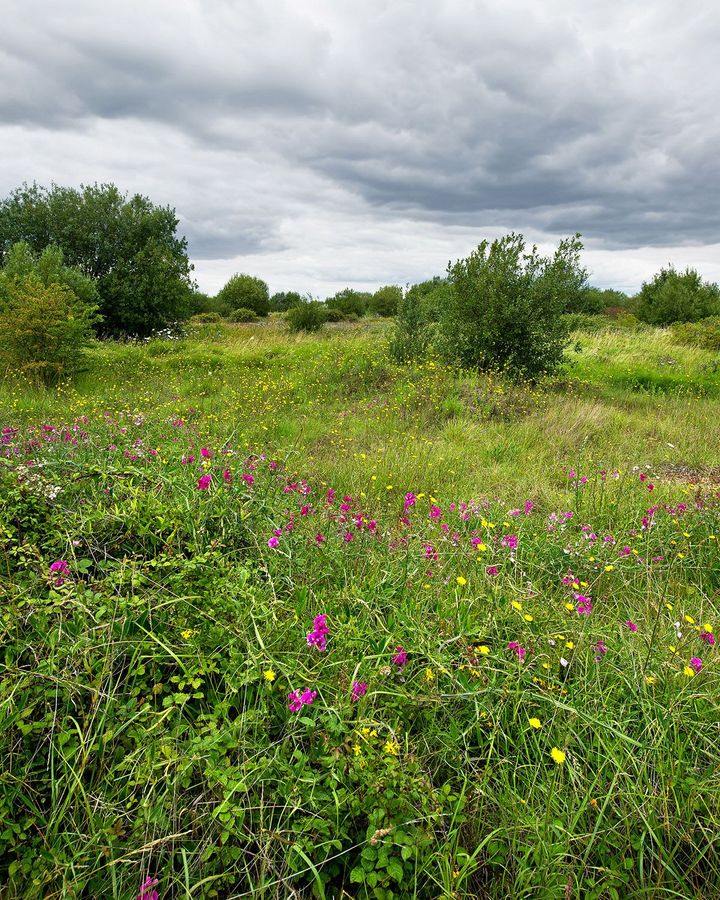
The climate emergency felt close at hand on Canvey Island. After exploring the nature reserve, I followed the towering seawall south to the Lobster Smack, a 17th-Century pub that features in Charles Dickens’ Great Expectations and was once renowned for smuggling and bare-knuckle boxing. Running along the south coast, the concrete barrier is a reminder that Canvey Island has always been threatened by the sea: 58 people were killed in a devastating flood in 1953. The current defences may look formidable but will not protect the island as sea levels continue to rise due to climate change. A government project is set to renew and improve the seawall so that it remains effective until 2070.The UK’s implausible tourist attraction
The vulnerability of the island underscores the importance of sites such as Canvey Wick. “Here we want to create an appreciation of the links between nature and our ability to survive on the planet and between biodiversity loss and climate change,” said Outten. “[The trick is to] get people interested in nature first – once they’re interested, they’ll want to protect it.”
Src: bbc news



